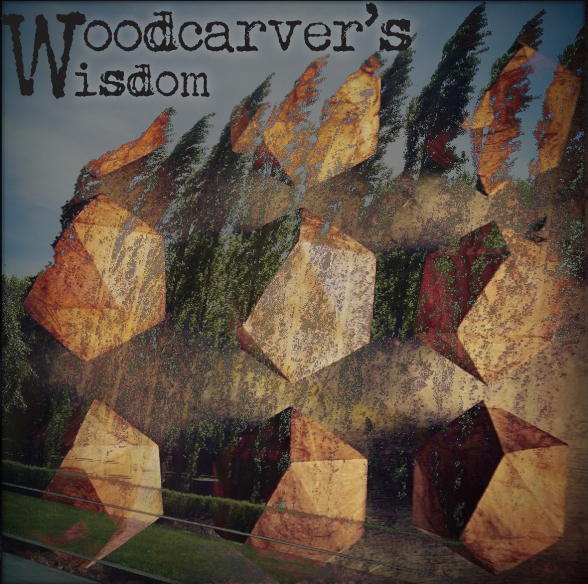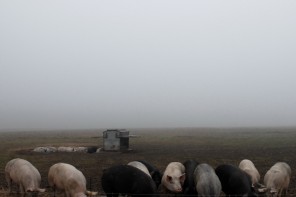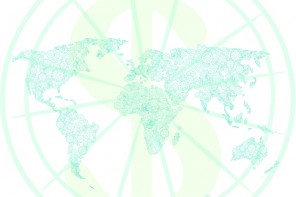Aleph Geddis: woodworker, world traveler, and Moksha store owner splits the majority of his time between Orcas Island, off the coast of Seattle; Washington and Bali, Indonesia, carving beautiful things out of wood. Growing up in “the carving shed,” as his blog titles it, under the education of his stepfather, Aleph is a living illustration of a craft being passed down through generations. I spoke with Aleph to learn more about this old world art and gained the capacity to see the beauty and hope that he brings to craft. This is the woodcarver’s wisdom:
I grew up in and around the woodshop, always using my hands and sculpting from a young age. I was constantly creating in there- well, mostly making swords. My stepdad is both a carver and a boat builder. Though I didn’t know I was going to be a carver, I always had a skill for carving. When I was a young adult, at nineteen or twenty, my friends and I took a class with my father. During that class I noticed I had a knack for both carving and sculpting and soon after, I began an apprenticeship with my dad; working with him for a number of years, doing commissions together and personal projects. I started carving realistic birds, plants and various other things. A few years later, I got interested in northwest coast first nations (Native American) art and took classes with another inspirational carver. I started making more masks and totem poles, developing my own style; a fusion of what I had learned from my dad, the other carver and what I developed through experience.
Some think of wood carving as more of a craft, and there are wood carvers who do it as art – where that line is, that is key – finding the points where you feel like you are making art. It’s a lot of repetition and use of skill, and it takes a long time before you feel like you are truly expressing yourself. Sometimes, woodcarving is a mixture of craft; because there is so much work and knowledge that goes into sharpening tools, using all the tools and caring for them- there is a lot of craft in that. The Technical, process, the skill – once you master that, you can embark on creating art. I have a very technical part in of my brain and carving allows me to express it.
I do a lot of drawing, and its difficult to find a piece of wood that fits into my drawing. Most of the vision is already there, but finding the wood that suits it is challenging. There is a style of going into the carving, where things become so disorganized and too much time is spent constantly trying to clean things up. My system involves getting everything very clean and organized – taking it one step at a time, completing one step, before starting on a new step.
Hand carving is the most intimate way you can interact with wood within woodworking. The whole process of carving is a meditation. My goal is to reach a point where I am not thinking, silencing my analytical mind. In woodworking, most of the process consists of taking off the chips. There are these small pauses called the decision-making points: when you’re making a decision, you have to bring in your mind. But the rest of the time, I’m trying to go to this point of no mind – of just presence and just being in it. I’ve had these little glimpses where there is no time at all – there is no mind. That is the goal.
Sometimes, it’s timeless. But it depends on the process. I was working on totem cube chairs for a store in Seattle, Washington. With just two months before I left for Bali, it was a time crunch to finish the chairs. Because it was such a big project I was limiting myself to six hours of sleep and carved for the remainder of the day. A similar comparison might be: when someone is cramming for a final, and because its only one night or one week, that works. However, it is not sustainable continue for a few months. So, what’s the way to be the most efficient? Six hours of sleep, a couple hours of eating, the rest is carving. That was my last two months on Orcas before leaving for Bali.
The space my stepfather created on Orcas – as was his intention – is a magical place. On Sundays, he teaches a free class; some people commute all the way from Seattle. Growing up in that environment has taught me and brought me to where I am. There is no question of what you do when you are there – you make stuff. Tangible things have been made in his workshop for 35 years. In other places, I bring my stuff, but the intention is never as clear as it is there..
When I’m on Orcas, I am carving all the time. In Bali, I am a little more balanced- I’m surfing in the morning, I’m carving and hanging out with friends.I go through little waves of different periods, times of varying focus. I still have a spiritual connection with the process of what I’m doing. I won’t do a commission unless it’s really what I want to do and it pushes me further to do something greater than I would be doing otherwise- to evolve and expand. I’ll take the financial hit because I need to be true to what I am doing and the financial aspect will follow. I have been getting a lot of reassurance from just being true to what I am supposed to be doing and doors are opening.
I’ve been really lucky. Most of my life, I haven’t worked for other people. The things that I care about the most– my art, making my own kefir- I want to be able to do it myself, and I do.
There are so many people who are disconnected – especially in cities – from making things with their hands. When we are so analytical and conceptual in ours mind we get so removed from reality. So to actually make things with your hands is a novelty but I feel people are starting to find that again. There is a resurgence of craft and handmade articles. When I go too far off in my head, really coming back and making something grounds me. Carving for me is so raw; you are making something from a tree, especially, when you are only using hand tools, you are just shaping things with your hands and there is that energetic connection. A tree is even beautiful as it is.
I love trees in general. Red Cedar is one of the types of wood that I carve most often and it’s also my favorite tree to climb. Its carving personality is so different from its climbing personality. Climbing cedar is so strong and bendy. I can go out on the branches and they will bend down and bounce. I have this little grove of five or six trees close to each other and their branches all overlap so I can play around and brainstorm in there. Cedar is the native wood used most often for carving. West coast natives used cedar for everything as it is very rot resistant and splits easily into huge boards which is good for making their long houses. In other places in the US, Natives used teepees or whatever, because they couldn’t make huge long boards.
Though sometimes I feel badly about the wood I am using, I know that what I am going to carve in my lifetime and does not compare to the amount of wood that goes into building houses.
It’s clear that ‘time equals money’ in this whole commercial, capitalist system, where fast production is the aim. I can really see it in Bali too- if I go to the carving town and see the best stuff in the galleries – it’s always the grandfathers’ pieces and not from this generation because people go to Bali with this attitude: “can you make it for this price,” “cheap and quick,” so they are mass producing mediocre things. Stuff is getting crappier, faster and cheaper and that’s the market. I went into a place last week to buy some Buddha’s for my mother’s store, and there were thousands & thousands & thousands of cheap things; I was unable to find any Buddha I really liked. I went into another place where a man had been carving a Buddha for probably 10 days, which isn’t really that long unless compared to the ones being created in just a day. Seeing people that were actually doing the art made me sad that a lot of the art is getting lost. There are so many villas being built so instead of carving, the young carvers are going to work on building. But I think it will actually have a positive effect. Building the villas weeds out the people who are just doing it for money from the true carvers. If there are fewer people carving, the price of real art will increase and the artists will gain more recognition for their artwork. With less competition for cheap products, allowing the values to rise.
There is a growing resurgence of art and of things made by hand, now mixing old world with new. I feel this honoring again which is exciting. There is hope. We are trying to make true art available for everyone; exposing it to people and seeing whom it grabs.







